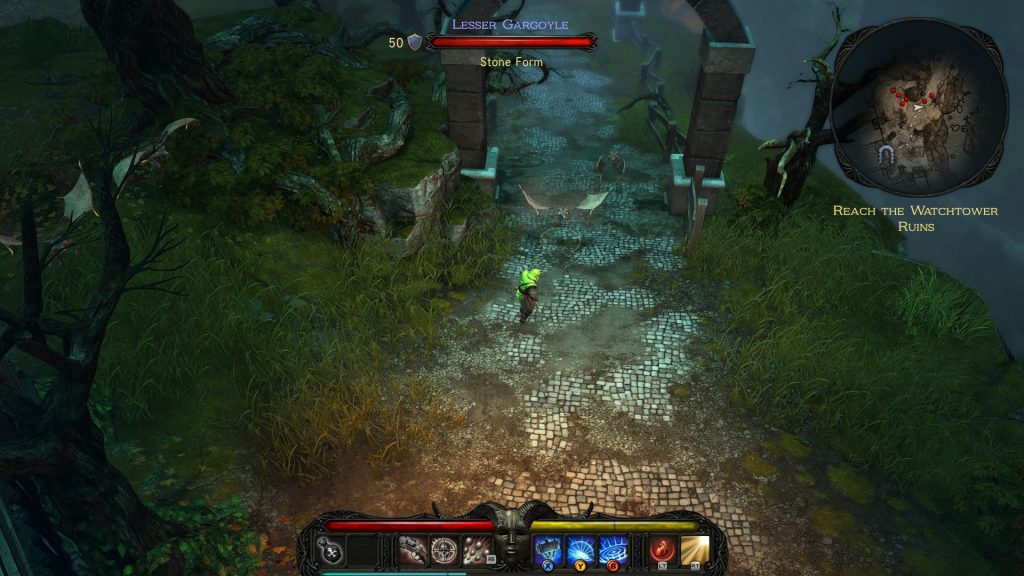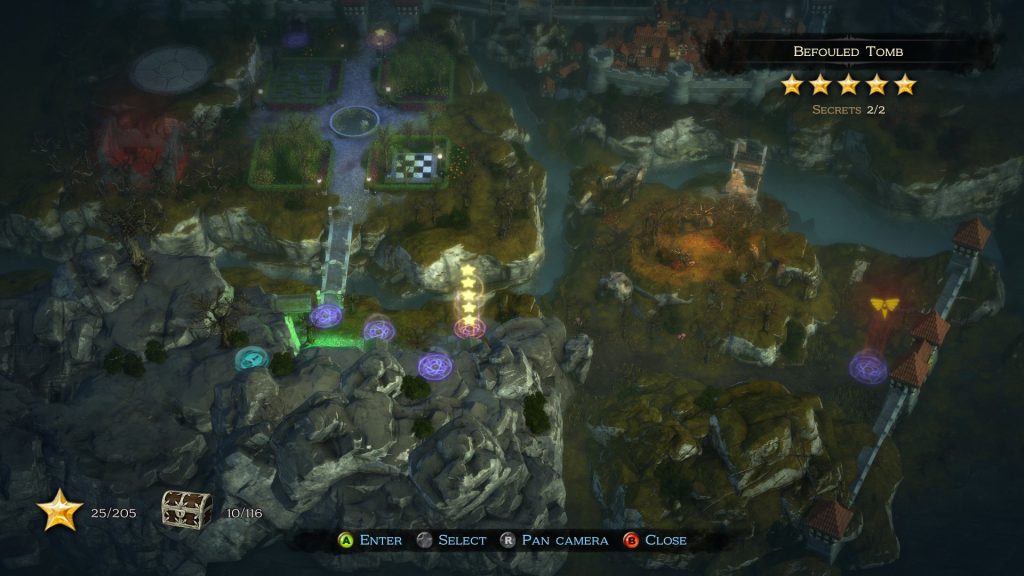On Victor Vran: ARPG
Zagoravia is overrun by evil, hunters have been lured there as mercenaries but are winding up dead, yet the ruler refuses to budge, only Victor Vran can save the day.
We’re going to be running the Victor Vran: Overkill Edition review a little differently, with us treating each of the three composite games as individual entries – this makes sense as some people will have already played the core game, and so won’t need to know about how that part of the VV:OE handles. In addition, it was almost two years between the initial release of the game and this version, so the two additional content packs will have been built and finessed with lessons learnt from the core game. So, for those who haven’t played the core Victor Vran title -now known as Victor Vran ARPG- then here’s our thoughts on it.

I’ve cut my ARPG teeth many times before. After all, to have been playing PC games at the time when Diablo and Diablo 2 came out and not to have dipped your toes into the series was both an odd and unlikely. I enjoyed the games, I’d never go so far as to say that they broke new ground for, or changed me though. The games took pride in the min-maxing of statistics and the grind – sacrificing choices -or the illusion of- and party management for quick, throbbing play. It’s those choices, and that party play, that I always enjoy when it comes to computer RPGs – Baldur’s Gate’s pauseable combat, and chatty characters; Jagged Alliance’s dynamic turns and slight resource management; and, SWAT 2’s clunky movements, and ambitious threat-based surrender system.
There’s been so many entries into the ARPG genre however that it is hard to not find one with a setting – the setting and slight mechanic changes of the games undeniably being the points that differentiates them- which appeals. Over the years Diablo’s influence has undeniably rattled its way through hundreds of games, many gathering fans, sequels, and followings themselves; although I have to admit that during my decade spent working Games Retail I can’t recall being once asked for a game like Diablo, or for recommendations of an ARPG, at least by the genre name.
But, with prominent series like Diablo, and it’s various students -Nox, Sacred, Torchlight, Divine Divinity, even the console adaptions of Interplay’s Baldur’s Gate and Fallout titles, to name a few- mucking in under the ARPG umbrella, it is certain that Victor Vran is in mean company.

The team at Haemimont have managed to deploy a few tricks which beat back some of the weaker areas of the genre; the grind, and the inventory management. It also manages to introduce a few mechanics which allow decent character customisation, without creating large messes of skill tables or grids. Examples of this include the decision to give each dungeon its own set of challenges – five challenges which give major EXP and gold pay-offs, but are entirely optional.
Another example is the hex system, wherein you essentially curse yourself -making enemies harder- for an EXP bonus. Making enemies deal extra damage, most faster, or even simply having more HP is a surefire way to amp the difficulty’s risk/reward structure without having to use the old ‘Easy, Medium, Hard’ options on each level. Better yet, it’s entirely optional, so players can simply save such things for later playthroughs, or quick re-runs of earlier areas while near the the endgame.
I said that they had deployed a system which would take the place of the sometimes complicated skill and ability systems present in the genre. Abilities are tied to weapon types, with each having three attacks of varying strength, range, and speed – a scythe may be slower, but it’s sweeping attacks are effective at crowd management; on the other hand an electric-gun will zap enemies with low damage at high range for it’s main attack. Crowd management is made easier by the inclusion of Overkill, when you defeat an enemy and do substantial damage over their remaining health it’s classified as such; this results in reduced cooldowns – it’s a quick way to get through masses of weaker enemies, and it’s also something to bear in mind while equipping your character. As you can have two weapons equipped at once, each with three abilities, the skills system promises you 6 types of attack at any given point.
You can also equip spells as ‘demon powers’, overcharge attacks which normally fill from performing combo sequences in combat, at choice as well; these can range from devastating meteors to protective shields.

There’s also a system based around Destiny Cards, which essentially replace a class system in the game by giving powerful amplifications to certain elements of the character – be that an increased health pool, more effective potions, a freeze effect which deploys on critical hits, or a mass of other options. My favourite is a magic-missile like ability which sends homing-missiles out to take out more enemies in the area. This system, combined with the fact that you can equip whatever weapons you like, removes any need for a class system; by the fifth or sixth level up most players will have vastly specialised characters that they only majorly respec for certain challenges.
There are, of course, negatives in the game; there will one day be an ARPG with an amazing, compelling story which transcends the simple ‘Evil is here, and they’re bad bros’ story format, it’s a hard ask, and one that Victor Vran doesn’t achieve – Zagoravia is overrun by evil, hunters have been lured there as mercenaries but are winding up dead, yet the ruler refuses to budge, only Victor Vran can save the day. The story being weak doesn’t really matter too much, nor does the voice acting, or the fact that the game shifts from FMV to in-game-visuals, to hand-drawn art, when talking to characters at its own whim.
All of that said, Zagoravia has aged well these last two years, it still looks great, the world looks busy, and the little platforming moments are always welcome because the shift in height feels new and fresh – I can’t recall jumping to explore in an ARPG to date. The jump also serves as a combat feature, although it’s rarely useful while the camera is in full isometric, however when the area is tighter and it moves in a bit, it can be enough to get you out of a sticky situation.

So, there we are. Victor Vran challenges normal hack-and-slash conventions by passing the majority of the difficulty curve to the player; at the same time, the equip system streamlines skill and class systems into an accessible format which not only removes the need for a large amount of menus, but also allows you to essentially completely change up your character on the fly. These features make the game extremely accessible and malleable. If anybody is reading this and has been thinking of returning to the game type, or just trying one out for the first time then Victor Vran ARPG is definitely a perfect place to start.
Victor Vran ARPG is available as part of the Overkill edition on PC, Xbox, PS4. We’ll be covering the two expansions (1), Motorhead, and (2) Fractured Worlds, over the next week or so.
Comments are closed.